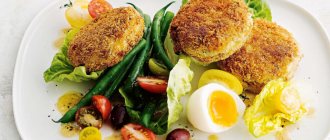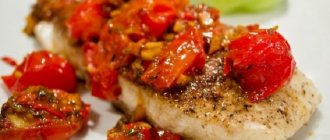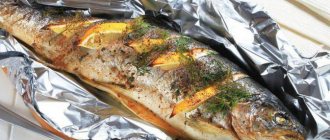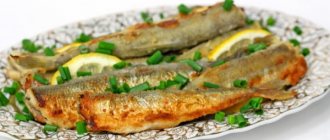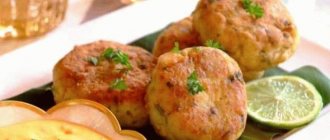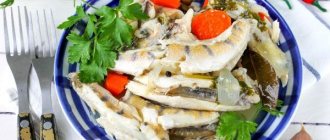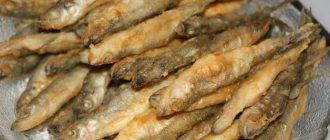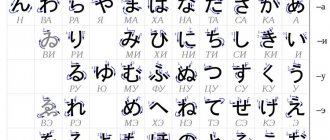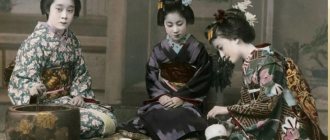Japanese cuisine is both beautiful and mysterious, attractive and incomprehensible - like the whole Land of the Rising Sun. The most famous oriental dishes in our country are sushi, sashimi and rolls. However, the cuisine of the Far East is not limited to them only. The Japanese cook delicious noodles and make original dishes from seafood and different types of meat.
Japanese cuisine is delicious and beautiful
Features of Japanese cuisine
Japanese food is not just food for the body, but a delight for the eyes. Cuisine of the Land of the Rising Sun:
- requires a reverent attitude to form and color;
- includes the concept of seasonality and appropriateness to weather and period of year;
- puts the natural taste and appearance of ingredients at the center;
- served in small portions and small pieces that can be eaten with chopsticks or hands;
- necessarily includes green tea accompanying the main meal.
Traditional dishes are prepared from fresh ingredients, avoiding food that has been stored for a long time (with the exception of sauces and rice). Many recipes include seafood.
An important feature of Far Eastern cuisine is the association of food and season. Each season corresponds to a set of delicacies. Taking this association into account is just as important as using only fresh produce. For example, in autumn, carrots are cut into the shape of maple leaves for soup, and spring desserts are decorated with sakura flowers.
Japanese dishes cannot be called heavy. Food is served in small portions. Most traditional foods are low-calorie. However, there is no threat of hunger: a wide variety of dishes and snacks are served at the table at the same time, so everyone will leave full. In former times, an aristocratic meal included up to 20 courses, and the classic division into hot, cold, soup, main course, and dessert was not used. The Japanese distinguish the beginning, middle and end of a meal. The order of consumption is at the discretion of the diner.
Japanese food is tasty and dietary
FOR A LARGE COMPANY
Shabu-shabu . This is not just a dish, it is a whole ritual. A pot of boiling water and plates with thinly sliced vegetables and meat are placed on the table in front of you. Sometimes noodles and tofu are also served. You need to put vegetables in the pan to make broth.
The thinnest pieces of meat are lightly immersed several times in boiling soup (in which vegetables, mushrooms, and tofu are boiled), and after the meat changes color a little, it is eaten after dipping it in one or another type of sauce. The sauce plays a very important role: as a rule, it is prepared from citrus fruits or with the addition of ground sesame seeds. Actually, the dish got its name from the sound that meat makes when immersed in boiling water.
After the meat is finished, udon noodles or rice are added to the soup, which creates another dish that the Japanese love to end their shabu-shabu dinner with. Usually beef is used, but recently shabu-shabu made from pork, chicken, lamb and some types of fish have become popular.
Rice dishes
The most famous recipes in our country for classic Japanese cuisine are with rice. On average, a Japanese eats rice 2-3 times a day; often without seasoning, in small portions. It is believed that such food maintains health. In addition to main dishes, rice is used to prepare alcoholic drinks - beer, sake, sethu. Rice sake aged for decades reaches a strength of 18 degrees and tastes similar to sherry. Sethu is like vodka.
Onigiri
The national rice dish is onigiri (rice balls with filling). These are convenient portions, quickly fill you up and are suitable as a snack. Since the bulk of the ball is rice, each serving contains a lot of carbohydrates. Thanks to this, onigiri is a popular snack that is taken for lunch at work, school, or on a trip. Anyone can try onigiri - portioned balls are sold in convenience stores on the prepared food shelves. You can eat them on the go - the portions are packed in special bags that open in one motion. Preparing onigiri at home takes a few minutes and is accessible even to inexperienced cooks.
There is no single generally accepted recipe. Rice balls are not made with sweet fillings, but this is where the restrictions are exhausted. Often, portions are supplemented with vegetables, fish, and meat. You can prepare the filling specially or use leftovers from what you made earlier - a half-eaten omelette, yesterday's salad, meat from soup.
Cooking process:
- boil short grain rice;
- make a ball;
- wrap with a strip of nori;
- serve with soy sauce.
Japan's national rice dish is made from unleavened rice. Portion size is at the discretion of the cook. The average weight of a ball is 80 g. You can sculpt onigiri in the shape of triangles, squares, balls and even cartoon characters. In the photo, the menus of famous restaurants often feature exquisite, impeccable classic onigiri.
Onigiri
Sushi
The first step towards the emergence of the modern version was the invention of fish fermentation. In those days, sushi was made from fermented rice and a piece of fish. A strip of nori was added for decoration. Literally, the word “sushi” is translated as “rice with vinegar”, but is used to refer to a small (comparable to the size of a finger) piece of fish on rice. The most common subtype is nigiri, prepared with raw fish or shellfish. The serving size is such that it can be eaten in one sitting.
Sushi is the country's most popular dish outside Japan. They are served with wasabi and soy sauce, and pickled ginger is eaten between servings, which renews the sensitivity of the taste buds.
Over the past centuries, sushi has evolved from everyday food into masterpieces of gastronomic excellence. The serving style depends on the ingredients, the characteristics of the restaurant and the principle of the meal. Simple presentation and the ability to follow Japanese minimalism are highly valued.
Sushi is distinguished:
- chirashi in the shape of a rice box with fish slices;
- inari with fried tofu, mirin and sake;
- maki with fish filling, wrapped in seaweed (rolls);
- nigiri or edomae sushi, which are the most common;
- temaki in the shape of a nori cone with rice filling and stuffing with vegetables and fish.
Poppies are divided into:
- shikai (in the form of strict figures, with complex layers of ingredients);
- uramaki (rolls with rice facing out, decorated with sesame seeds and caviar);
- hosomaki (simple rolls);
- futomaki (large rolls filled with several ingredients).
Sushi is served with any meal - breakfast, lunch, dinner.
Sushi
Seasonings and sauces
Unlike other Asian countries, Japan does not use a lot of seasonings when preparing food. But this can only be said about the food that the Japanese eat every day. If you order a dish in a restaurant, it can be prepared for you with the most exotic spices and seasonings.
The following spices are used in Japan:
- Ginger;
- Different types of pepper;
- Curry;
- Rice and soy vinegar;
- Sesame;
- Rice wine and sake.
Seasoning mixtures are made from all of the above. quite unusual ingredients are added to them , for example:
- Dried crushed fish;
- Citrus peel;
- Crushed flour products.
As for sauces, there are a lot of them in Japan. There are dozens of basic recipes alone, and hundreds of little-known recipes common in a certain area. In addition, each chef has his own secrets and ingredients.
The Japanese love to serve sauces with almost any dish. And sometimes two or three types. So, if you order regular rice, you won’t be surprised that they will bring you several gravy boats or plates with ready-made sauces. And it's absolutely free !
Seafood
Japanese chefs can cook thousands of varieties of seafood. The classic version is light frying, stewing, steaming. Many ingredients are used raw. What type of raw fish to serve is determined based on the season. The advantage of tasty food is rapid absorption and saturation with useful microelements. To disinfect fish, it is treated with vinegar.
Occasionally, seafood is consumed not just raw, but alive. They are called odori dishes. This is how squid and perch are served.
Sashimi
Sashimi
Sashimi is rightfully considered the most popular in the Land of the Rising Sun. Sashimi is sliced raw fish. Shiso and daikon are served as appetizers. Sashimi is often served with a portion of rice.
There are several styles of sashimi. More often they are prepared as hira-zukuri - from rectangular pieces. Ito-zukuri is a thin slicing style. Kakku-zukuri is the most complex option, requiring translucent cutting for subsequent composition of picturesque patterns.
A good tone in Japanese cuisine is minimalism in appearance and taste. In order not to lose the originality of the fish, sashimi is served with soy sauce and wasabi.
Yakizakana
This is the name of a traditional fish dish cooked over an open fire. At home, yakizakana is made on the grill. It is especially appreciated for its delicious crunch. National food is served in ryokans. Most often, yakizakana is part of breakfast, but sometimes it is served at other times of the day. For cooking, horse mackerel, saury, salmon, and mackerel are used.
Yakizakana
Fugu
A specific dish of Japanese cuisine is fugusashimi. The delicacy is expensive, tasty and very beautiful. It is prepared from pufferfish, the meat of which has an unusual pearlescent color. The slices are served raw or fried. Traditional layout - petals in a circle. Suitable sauces include vinegar ponzu, asatsuki, grated daikon, and red pepper. Fugusashimi must be accompanied by:
- chawan – pufferfish fins charred from frying on a grill, placed in sake for a couple of minutes;
- soup made from boiled pufferfish, rice and eggs (fugu-zosui).
Every year the Japanese consume about 1,500 tons of fish. Scientists have proven that fugu appeared in the diet of the inhabitants of the Land of the Rising Sun several thousand years before the beginning of our era.
The peculiarity of the fish is that it contains dangerous tetrodotoxin in the liver, caviar and muscles. Just 1 mg of the compound is lethal to an adult; fish contains up to 40 mg. There is no effective antidote. To prepare pufferfish, chefs undergo special training, after which they receive a license. The price in a certified restaurant is up to $750 per kilogram. The best is considered to be fugusashimi, which contains a microscopic dose of tetrodotoxin, creating a feeling of mild euphoria.
Puffer fish
Useful properties of Japanese food
The country has a record number of centenarians, the reason for which is a moderate, natural and predominantly plant-based balanced diet.
Japanese cuisine is a moderate and natural diet.
The vitamins contained in vegetables are not destroyed by long-term heat treatment and have a general strengthening effect on the body, supply it with all the necessary minerals, maintaining the condition of hair, nails and skin, and increase attention.
This is a good source of fiber, which prevents diseases of the cardiovascular system and cleanses internal organs of toxins.
Polyunsaturated fats, which are found in fatty fish and algae, fight aging and improve the functioning of internal organs and the brain. Hormone-like substances are synthesized from them, which regulate processes associated with blood clotting and have anti-cancer and anti-inflammatory effects.
Meat dishes
Although the Land of the Rising Sun is known primarily for its fish cuisine, meat is a special pride of Asian chefs. The most popular:
- sukiyaki;
- shabu-shabu;
- nabe.
Sukiyaki has been known in Japan for a century and a half. Previously, it was cooked over a fire, now they use special braziers and vats.
To prepare nabe, the meat is cut into thin slices and stewed in a sauce with miso, onions and vegetables. Sake is often added. It is customary to serve raw eggs and soy with meat.
There is sukiyaki-nabe. It uses marbled meat, tofu, vegetables, noodles, and eggs. During the cooking process, improve the sauce for sukiyaki-nabe with spices to taste.
Katsudon, a pork cutlet, is popular. It is served with egg filling.
Kobu-gyu is the main meat dish in the Land of the Rising Sun. It is prepared on a special roaster in front of the guests from marbled meat of the highest quality. The peculiarity of kobu-gyu is its delicate, melting taste. For cooking, only the meat of young bulls raised in Kobe is used. The livestock farming process is strictly controlled: the bulls are given the best grain and clean water, and immaculate meadows are used as pastures. The animals' diet includes beer, and daily procedures include electric massage and relaxation in cradles listening to classical music.
Katsudon - pork cutlet
Yakitori
Japanese yakotori kebabs are famous all over the world. They are made from chicken and served with vegetables. Most often, yakitori is made on bamboo skewers. It is not necessary to remove the entrails from the bird for cooking. Yakitori is an inexpensive beer snack served at most izakaya and bento shops.
In some areas of the country (Kyushu, Hokkaido), yakitori is called kebabs with seafood and meat. Kebabs made from a mixture of chicken, meat and seafood are popular.
Yakitori
Niku-zaga
Niku-zaka is a simple, everyday dish common throughout the Land of the Rising Sun. Its taste is called “mother” or ofukuro no aji. Niku-jaga is almost identical to the classic potato stew with meat. The recipe appeared at the end of the last century. It is believed that the idea of cooking potato stew first came to the minds of the admirals of the Imperial Navy, who carried out the order of Togo Heihachiro, who wanted a dish similar to the treat at a British Royal Navy dinner party to be constantly served at his table.
The Kure city government does not agree with this story. Representatives of the municipality are confident that niku-zaga is an original invention of chefs from this town.
Niku-zaga is made from potatoes and a small amount of meat. To prepare the beef, cut it thinly. The finished stew is served with white rice and miso. In some regions, beef is replaced with pork.
Niku-zaga
No. 5. Shabu-shabu
This traditional Japanese dish gets its name from a type of kitchen utensil. Shabu-shabu is a deep metal plate that can be heated in the oven or over an open fire. Broth with vegetables, tofu and noodles is poured into it. Served separately are sliced meats from duck, pork, lobster and chicken fillet: pieces of it are dipped into the heated broth immediately before consumption. Shabu-shabu is such a rich dish that it is served only in the cold season.
Noodles
Japanese noodles are a special product, unlike European pasta. Rice, buckwheat, and wheat are used for cooking. Ready meals are served cold or hot. Thus, soba is often made cold and consumed with soy sauce, and wheat udon is served hot. The broth in which the pasta was cooked is served separately and consumed with soy sauce.
Ramen
Ramen is a healthy and tasty Asian dish that has spread throughout the world. Main ingredients:
- noodles;
- seaweed;
- bouillon;
- vegetables;
- seasonings
The noodles are combined with broth and other ingredients and served. Often a boiled egg, cut into two slices, is added to ramen.
There is no single recipe for making ramen. The Japanese themselves divide the options by region: Hakata, Kitakata, Wakayama, Onomichi. A special variety is spicy kimchi ramen.
There are rules and order for eating ramen. First, large ingredients are eaten (sticks are used). The noodles must be sucked in, making specific squelching sounds. The broth is drunk last.
Delicious ramen
Soba
Soba is a traditional product made from buckwheat flour (often with the addition of wheat for plasticity). A special knife is used to cut the dough; the finished strips are boiled. There are varieties of soba:
- cha (with green powdered tea);
- hagi (with seaweed);
- inaka (thick noodles made from whole buckwheat grains);
- juwari (made from pure buckwheat flour);
- Sarasina (light noodles made from peeled buckwheat);
- ni-hachi (20% wheat and has symbolic meaning).
Historians believe that buckwheat has been known to the Japanese since ancient times. In 1254, the monk Dome wrote a mocking waka about Greek, and the Ruijusandaikyaku collection of laws required peasants to grow this crop. Buckwheat noodles gained popularity during the Tokugawa period. Edo is filled with cheap buckwheat establishments catering to those for whom white rice is too expensive. It turned out that consuming soba reduces the risk of beriberi.
Soba is served cold in summer and hot in winter. The chilled one is decorated with seaweed and seasoned with soba tsuyu sauce made from dashi, soy sauce and mirin. It is served hot with diluted tsuyu, often with vegetables, seaweed, batter, and shrimp.
Particularly interesting is the “moon watching dog” tsukimi. For it they use cheese and egg. The yolk is associated with the full moon, the white represents clouds. Tsukimi-soba is served during the season of enjoying the moon.
On New Year's Eve, toshikoshi is prepared - soba, symbolizing best wishes. When moving house, neighbors are given hikkoshi.
Buckwheat soba noodles
Udon
Udon is an essential, common, affordable Japanese food. It is available in most inexpensive cafes and restaurants and is known in various forms. The noodles are made from wheat flour with the addition of mineral water and salt. The culture of eating udon was adopted from China in the 14th century.
In the eastern regions of Japan, udon is served with a dark brown broth containing soy sauce. In the western part, light soy broth is popular.
Isn't rice bread?
Traditionally, rice was eaten every day in Japan, with every meal. But research in the 2010s showed that it is being replaced by bread. Scientists were surprised, because in Japan they began to spend more on bread than on rice . This mainly happens in houses where the older generation is over 60 years old.
There are several reasons for this:
- During the American occupation of 1945-1952, the country produced little rice. It was replaced with imported wheat flour.
- Since 1954, bread has become compulsory in all Japanese schools. This is how the country was accustomed to flour products.
- Since the mid-1950s, the government has realized that bread is more nutritious than rice. Therefore, the state began to reorient farms and households to growing wheat.
Nowadays, rice is becoming increasingly popular, especially among young families. This product promotes longer life expectancy. It is good for health, prevents obesity and removes toxins from the body.
If you ask what the Japanese eat rice with, the answer is simple – with everything. It can be either a separate dish or a side dish. It is often perceived as a regular food additive, just as we perceive bread.
Japanese sauces and seasonings
Soybeans
Although soy is not considered a traditional Japanese ingredient, it has long taken the country by storm. Distribution began from Kyushu, Honshu in the 18th-19th centuries. The product was brought from Korea and they learned how to prepare all kinds of dishes from it. The sauce and cottage cheese (tofu) have gained particular popularity. There is soy cheese that tastes like Philadelphia, and even soy sushi.
Miso paste is made from soybeans - a fermented product, on the basis of which the broth of the same name is made.
A popular soy product is fuju, the cooled, dried foam skimmed from boiling soy milk. Fuchsia is sometimes called soy asparagus.
Miso paste
Tofu
Tofu bean curd is a protein product made from soybeans with a neutral taste. This is an almost universal ingredient. It is believed that it was invented by accident - sea water got into a dish with crushed soybeans. Tofu was probably first made in the 2nd century BC. In Japan, bean curd has been known since the 8th century. In the second half of the last century, it penetrated into Western countries.
In Okinawa, tofu is produced with seawater rich in magnesium and calcium. It is called shima-dofu (island tofu). In the rest of Japan, curd is made by heating and filtering soy milk using magnesium chloride, calcium sulfate, or citric acid. The curdled cottage cheese is pressed and packaged. Raw tofu can be stored in a vacuum for weeks, and in a container with water for a week (you need to change the water every 1-2 days).
There are different types of tofu:
- classical;
- western (thicker than standard);
- Asian (with a high percentage of water in the composition);
- silk (contains a lot of water, suitable for desserts);
- smelly (popular in Shanghai).
Seasonings, nuts, and red bell peppers are suitable additions to tofu. The finished product is used for main courses and desserts.
Soy tofu
What do the Japanese eat for lunch?
In modern Japan, different cuisines and food styles are increasingly mixing. This has the biggest impact on your daily food intake. Not every Japanese can afford to go to a restaurant or order delivery of a traditional Japanese lunch to work.
Lunch in Japan cannot be called a full meal (in our understanding of the word). Rather, it is a light snack or lunch, followed by a full dinner. A traditional Japanese lunch looks like this:
- Rice or noodles, cooked in any form;
- Salad, tsukemono or boiled vegetables;
- Raw, boiled or fried fish.
Vegetables, soy sauce, and sometimes potatoes are served as a complement to lunch. If finances allow, fish can be replaced with chicken.
Many Japanese prefer to dine at fast foods. This is mostly done by young people and middle-aged people. Dishes in fast food establishments vary, ranging from regular French fries to sandwiches with seaweed and raw fish.
Interesting fact
In Japanese schools, milk is often served for lunch. This product is not popular in Asian countries, but it has caught on in Japan.
In the post-war years, they tried to compensate for the lack of calcium in children with its help. Now milk has become an element of the traditional Japanese breakfast.
Beans
In Japanese cuisine, beans are not only a popular legume with which to make main dishes, but also an ingredient for the sweet azuki paste (anko). To make anko, beans are boiled with honey or sugar.
There are subspecies:
- tsubu (with whole beans);
- tsubushi (mashed boiled beans);
- koshi (filtered tsubushi);
- sarasi (dried and reconstituted paste).
The paste can be made from any color of bean. For chestnut there is the term “kurian”, for white - “shiroan”.
Popular dishes with anko:
- ammitsu (dessert with agar-agar and fruit);
- an-pan (baked goods);
- dango (rice balls with an paste);
- daufuku (mochi with anko);
- dorayaki (anko sponge cake);
- taiyaki (anko cookies);
- ekan (jelly with paste);
- ankoyaki (grilled pasta);
- shiruko (pasta soup);
- manju (steamed paste cakes).
Bean paste is not just food, but an important element of Japanese culture.
Taiyaki
FOR SWEET TOOTH
If in the West caramel sweets, chocolate and chocolate candies, and all sorts of cakes predominate, then in Japan fruit and berry products, such as marmalade, marshmallows, jam or jam, dominate the sweet aisle.
The most common bean pastille is ekan . The mixture of red bean paste, sugar and Japanese gelatin takes quite a long time to cook. The resulting mass is poured into wooden molds, in which it hardens. It is believed that ekan was first made in Japan, in the city of Kyoto in 1589. At that time, very detailed rules for the tea ceremony were developed. Yekan began to be served during the tea ceremony, as it turned out that its sweet taste goes well with the slight bitterness of green tea.
There are many varieties of yokan in Japan. Somewhere it is made with the addition of chestnuts, somewhere dried persimmons or some local fruits are mixed into it. The popularity of yokan in Japan was also facilitated by the fact that it can be stored for a very long time, since it is boiled in sugar for several hours.
Uiro is prepared using a slightly different technology . It is milder than ekan and only slightly sweet. Another type of bean-based sweet is nerikiri , usually made from white beans. They are pre-cooked until a paste is formed, sugar is added to it and jam is obtained. This jam (called an) is used both as a filling and on its own, giving the manufactured sweets a variety of shapes - pine, bamboo or plum. These plants are a symbol of longevity in Japan, and nerikiri with their images are presented as a wish on appropriate occasions. Usually nerikiri figurines are made small, for one sip.
Pies with the sweet filling of manju . In the 14th century, the technology of steaming pies with meat filling was brought to Japan from China. But soon in Buddhist monasteries in Japan, instead of meat, pies began to be filled with sweet bean paste, since monks were forbidden to eat meat. Sweet manju began to be served with tea at ceremonies in Buddhist temples. Typically, these pies are made from a mixture of flour, powdered sugar and a yeast substitute, baking powder, then filled with an paste and steamed.
A very common dessert dish in Japan since ancient times is mochi - cakes or balls. Boiled glutinous rice is pounded in a special mortar and the resulting paste-like mass is rolled into balls. Often crushed aromatic herbs are added to the mixture for flavor. The easiest way to make sweet mochi is to fry it and dip it in sweet soy sauce.
When you come to Japan, you should definitely try taiyaki - cookies in the shape of a tai fish with a sweet filling. In some guidebooks, tai fish is mistakenly called bream, carp or crucian carp. The red pawpaw, as its scientific name sounds, lives not in rivers, but in the seas of the Pacific Ocean. Among the Japanese, tai fish is considered a symbol of good luck.
According to the classic recipe, the filling of taiyaki consists of sweet bean paste, but now taiyaki is baked with chocolate, fruit jam, custard or cheesecake. These desserts are sold not only in grocery stores, but also in specialized kiosks at every major metro or railway station. Taiyaki is a camp dessert. The Japanese see nothing wrong with eating fish with filling right on the street. Buy several taiyaki with different fillings at the tent. After all, this is the only way to find out which one you like best!
Soups
Classic Japanese soups are simple, minimalistic dishes with plenty of clear broth. Etiquette prescribes the sequence of consumption: in some cases, the broth is drunk first; for other dishes, the order is the opposite.
There is a division:
- simple soups (daily dishes);
- suimono (ceremonial dishes for special occasions);
- mushi (creamy, complex soups popular in restaurants).
Often soup is served for breakfast, lunch and dinner. Traditional dishes include seaweed, bamboo shoots, seafood, daikon, soybean paste, and dashi broth.
Suimono
Suimono is a delicate traditional soup. This is a festive and ceremonial dish with a mild taste and discreet aroma. Suimono contains shrimp, algae, citrus fruits, spices and fish chips. It’s not easy to make this soup at home; Even in Japan they prefer to order it in restaurants rather than making it themselves. Lime slices and boiled sweet carrots are added to suimono.
The soup is served in a bowl with a stand. According to the rules, first put all the ingredients in a bowl, then strain and heat the broth to 75 degrees, only then pour it into the rest of the ingredients. The finished dish is warm, liquid and flavorful.
Suimono
Misoshiru (Miso soup)
Misoshiru is a soup made with miso paste and minor ingredients. For the broth, be sure to use dashi paste. Traditionally, the composition depends on the season and includes products with a sharp and neutral taste. The rule is to combine floating and sinking components: for example, algae and potatoes.
Misoshiru, along with white rice, is a classic breakfast dish. For a long time, such soup was served both at the table of the aristocracy and in the poorest peasant hut.
A variety of misoshiru is wappani. It is common in Awashimaura (Niigata). The soup is prepared in a cedar container heated on stones.
Yakitori
One day we wandered into a yakitori restaurant for dinner. The name of the Moscow restaurant chain, where you can order sushi and rolls for delivery, is completely untrue. Yakitori is actually a dish made from pieces of fried chicken. This is exactly how the word is translated. There are no non-chicken dishes in the yakitori cafe. And there's definitely no sushi.
It turned out to be a colorful place. My husband compared it to the pubs on the outskirts of the galaxy from Star Wars. Smoky and very noisy. Everyone screams to hear each other and laughs at the top of their lungs. This is how the Japanese relieve stress after a working day. The tables are almost exclusively men.
There were no free drinks, but they did bring a plate of salad with curry sauce as an aperitif. We ordered two chicken options and a beer; we were given mugs half filled with ice and, for some reason, water, and bottles of beer. It turned out to be a good thing: beer doesn’t disappear so quickly. 0.33 was enough for the whole dinner.
The skewers are made from different cuts of chicken. For example, one from the central pectoral cartilage only. The other is made of skin, presumably from the neck. One more from the liver and only two from plain meat, gray. The breasts are fried separately; we did not order them.
There are almost no vegetable side dishes; all salad options are with chicken. So we settled for the aperitif plate.
Chicken skewers at a yakitori restaurant

